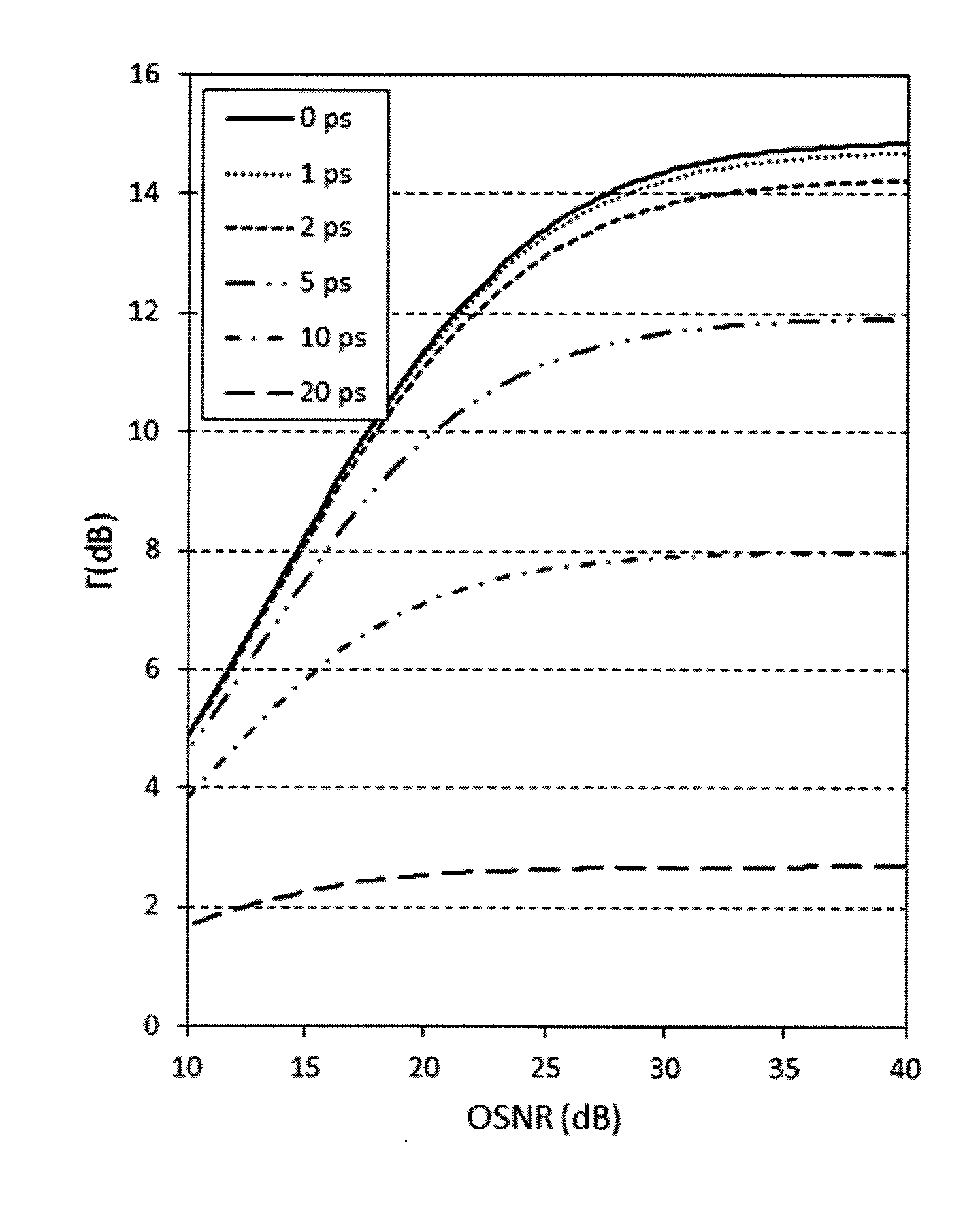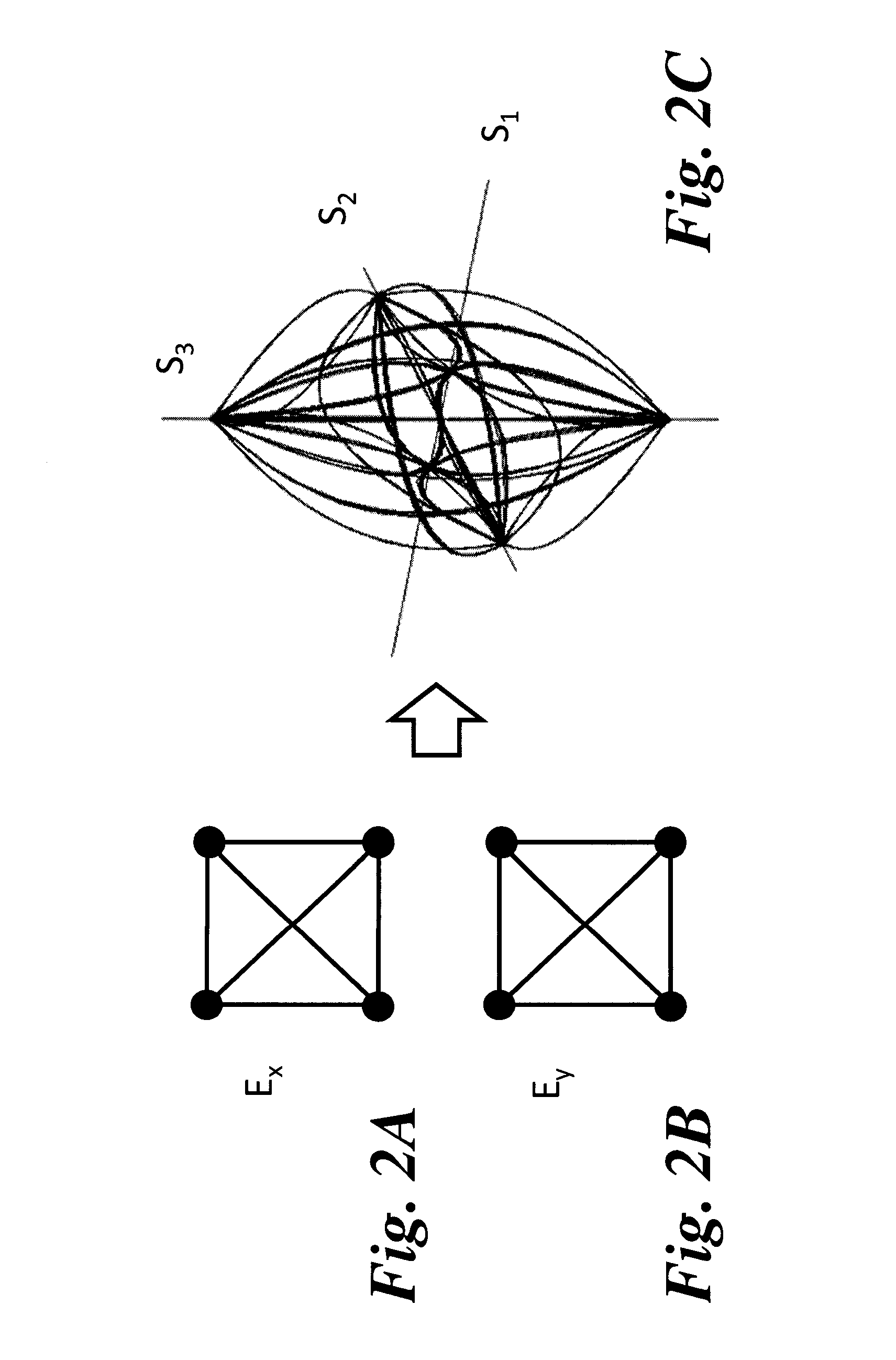In-band OSNR measurement on polarization-multiplexed signals
a polarization-multiplexed optical and in-band osnr technology, applied in the direction of electrical equipment, transmission monitoring, electromagnetic transmission, etc., can solve the problems of inability to reliably provide osnr measurement, disruptive and normally unsuitable use, and completely unsuitable “monitoring” applications, so as to reduce the cost and thermal dissipation of electronic components, reduce detection bandwidth, and induce significant errors in osnr determination
- Summary
- Abstract
- Description
- Claims
- Application Information
AI Technical Summary
Benefits of technology
Problems solved by technology
Method used
Image
Examples
Embodiment Construction
[0046]Referring to FIG. 1, a PolMux signal normally comprises two polarized data-carrying contributions that are mutually-orthogonal, i.e. signals whose respective Stokes parameters differ only by a polarity (i.e. + or −). Conceptually and without loss of generality, these two signals may be considered to be respectively linearly aligned with arbitrary x and y axes, with corresponding electrical fields Ex and Ey. The basis of the Stokes coordinates may be rotated so that, for instance, the optical-carrier electrical field of the first data-carrying signal Ex is aligned with S1, and that of the optical-carrier electrical field of the second data-carrying signal Ey is aligned with −S1, as illustrated in FIG. 1. Apart from the data-carrying signal contributions, the Signal-Under-Test (SUT) generally comprises an optical noise contribution which includes all other sources of optical power within the optical channel. The optical noise contribution typically arises mostly from the Amplifi...
PUM
 Login to View More
Login to View More Abstract
Description
Claims
Application Information
 Login to View More
Login to View More - R&D
- Intellectual Property
- Life Sciences
- Materials
- Tech Scout
- Unparalleled Data Quality
- Higher Quality Content
- 60% Fewer Hallucinations
Browse by: Latest US Patents, China's latest patents, Technical Efficacy Thesaurus, Application Domain, Technology Topic, Popular Technical Reports.
© 2025 PatSnap. All rights reserved.Legal|Privacy policy|Modern Slavery Act Transparency Statement|Sitemap|About US| Contact US: help@patsnap.com



